Connecting with nature
Slowing down enabled connection with nature
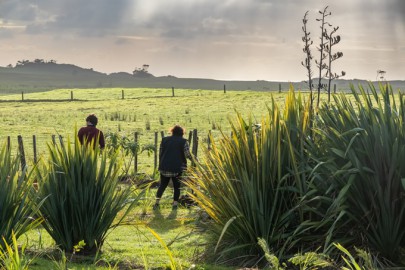
Connecting with nature
During the March – May COVID-19 alert levels 4 and 3 lockdowns or rāhui, 40 people from across Aotearoa New Zealand shared reflections of connecting with nature with our social scientist, Alison Greenaway. Most people noted that slowing down renewed their sense of connection with nature, seeing, hearing and feeling nature more intensely both at home and in their local areas. Connecting with nature generated a sense of calm, brought joy and eased numerous anxieties.
"Coming to terms with what is going on in the world has caused me to increase the amount of time that I do spend in nature because I find it's the only way that I can eliminate the stress and think clearly without being too overwhelmed with what's happening in the world"
(Central Aucklander).
We explored nature closer to home
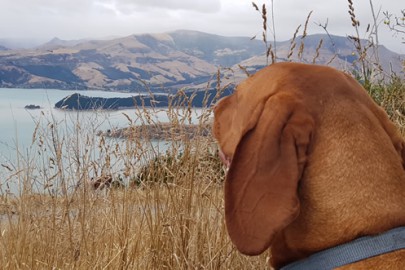
Nature close to home
For some it was disconcerting not being able to be on the sea, go for overnight tramps, cycle more rugged paths, pat other people’s dogs, recycle, buy seeds, check pest traps, weed or plant in public areas. However, people appreciated discovering new aspects of their homes, properties and local environment. A few people thought they were not allowed to travel more than 2 km from home and one person did not leave their property at all.
Some watched birds and insects up close and online
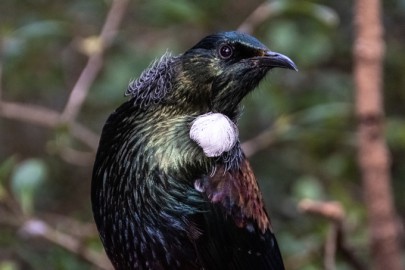
Tūī
For most people connecting with nature involved hearing birdsong. People spoke with delight about seeing tūī, goldfinch, pīwakawaka, Canadian geese, yellowhead, blackbirds, chaffinches, ruru, barn owl, gulls, kererū, kākā, and a spoonbill. Some people appreciated small connections e.g. growing micro-greens, seeing changes in light or autumn leaves on the pavement. Others appreciated big walks in their local bush or long days working on their land. A few people shared photos and stories of their nature discoveries via social media. Some appreciated being able to see wildlife via webcams around the world. Others watched nature documentaries, and some families accessed online environmental education resources.
Many became more thankful and compassionate
People expressed gratitude for the connections with nature they made and compassion for those considered less fortunate (e.g. those in apartments, towns or overseas). An increased sense of loss was felt by one person when trees in her local park were cut down during lockdown due to Dutch elm disease. A few people spoke about COVID-19 as the earth crapping back on us after we’ve crapped on it; and rāhui as Papatūānuku having a rest or restoring the mauri of earth.
"I feel like Mother Earth is heaving a big sigh of relief. I feel like the birds are coming back into the city. Particularly the tui. We have got tui now in the district who are not using the local dialect. I reckon they've come over from Rangitoto or Motutapu or one of those bird sanctuaries. Our local tui do all of these beeping noises, repetitive beeping but these birds have got proper songs"
(East Aucklander).
By slowing down during lockdown people connected with nature via a range of pathways up close and at a distance, they connected via many senses individually and in groups, and for a wide range of reasons including fitness, daily routine, family activities, hobbies, growing food, care for the whenua, mindfulness and overall well-being.
Caring for and with nature during rāhui was at times quite challenging
During the March – May COVID-19 alert levels 4 and 3 lockdown (rāhui), 40 people from across Aotearoa New Zealand shared reflections of connecting with nature with our social scientist, Alison Greenaway. People who have a sense of kaitiakitanga or guardianship expressed great responsibility for the whenua (land), and for the environment.
“Rāhui aside, it's my responsibility as an indigenous woman of Aotearoa to care for our whenua, …to look after the natural resources that are here. They are part of our whakapapa, part of who we are, and they are the whakapapa of our tamariki. If we don't help keep them flourishing, then it reflects on us as a people. If the whenua is sick or if the awa is sick or if the moana's sick, then we, the people, are sick”
(South Aucklander).
The response to Covid-19 made people think about how to handle environmental crises
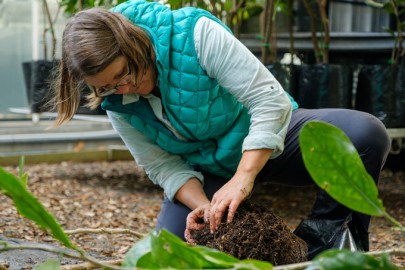
Tending plants
Most people did not feel required by law to care for nature during lockdown - nor at any other time; apart from animal welfare, waste disposal and managing water use. Those who were concerned about the environment noted how well people had responded to COVID-19 rules and wished there were stricter rules and/or more visible leadership responding to environmental crises such as climate change, biodiversity loss, water scarcity and plastic in the ocean.
Farmers noted that caring for nature is part of their job and lifestyle and this did not change much during lockdown. Those who see themselves in relationship with nature, as part of a bigger system felt called to maintain a good relationship with nature. Some people already designed their lifestyles and household consumption to limit their impacts on nature, so this prepared them well for lockdown; knowing how to grow food, bottle it and make do with what was around them.
“I’ve always had a veggie garden and so that's been no different, although we've been in a terrible drought up here this summer and it hasn't finished yet. I'm involved with a couple of taiao (environment) projects with our iwi and we just haven't been able to progress those in a practical sense over the last month, but, nevertheless, I don't think that matters so much. They'll keep, and when the time's right, we'll get back out there and get onto it again”
(Northlander).
Some people were able to keep caring for nature through their paid employment or unpaid voluntary work. Most people had to adjust their activity and focus more on coordination rather than on the ground activities (e.g. weed and pest control on public land was limited or halted).
Not being able to swim impacted well-being
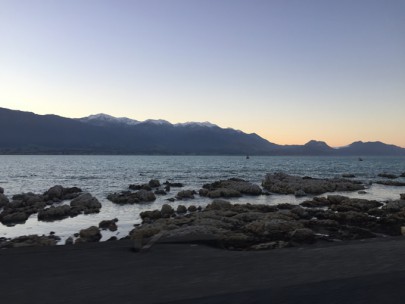
Coastline
Not being able to swim in rivers and the ocean during lockdown was commonly noted as a disruption to peoples’ connections with nature. Many expressed sadness but acceptance of this limitation. A few thought the policy was ill-conceived because of the impacts this might have on other people’s well-being (they themselves were managing okay). One person commented that the policy was not appropriate during a health crisis because swimming is key to maintaining well-being.
“We haven't been able to swim, which for us is quite a big deal because it's part of our healing and cleansing process, and it's part of keeping up our health and well-being. And when we get stressed or when we get down, we go to the water and we swim, and we pure (remove tapu), and we clear all the crap” (South Aucklander).
People have high hopes that post COVID-19 NZ will be more connected
During the March – May COVID-19 alert levels 4 and 3 lockdown (rāhui), 40 people from across Aotearoa New Zealand shared reflections of connecting with nature with our social scientist, Alison Greenaway. When asked about their hopes for the future of Aotearoa New Zealand typically people wanted nature to get more attention and better care.
The people interviewed want to take better care of nature
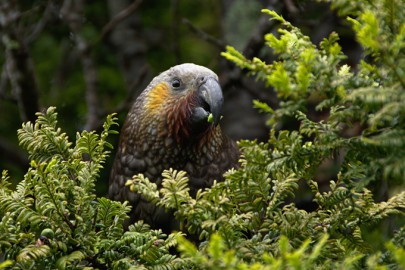
Kākā
A few people expressed the need for a mandate for nature to be considered in all decision making. One person said we need a voice and clear leadership for nature. Most people commented they wanted other New Zealanders to become more aware of the impacts people can have on nature. Some suggested more investment in green infrastructure, improved cycleways and transport in cities and between localities, and others supported continued work towards Predator Free 2050. Calls were made for more attention to the Resource Management Act and water management reforms. Consistently people asked for better climate change planning and leadership from local and central government.
But there was also a lot of scepticism that nothing will change, or things will get worse as people revert to old ways to manage the recession. Many people noted that significant changes to the economy were needed and used terms such as a circular economy, a doughnut economy, a green economy.
“I hope that we as a nation do not go back to business as usual. This will be impossible anyway as a lot of businesses will suffer over the coming months and years...The response must have a positive impact on nature – restore waterways, create jobs…sequester carbon. The Housing crisis must be addressed seriously, also creating jobs and using locally made materials…We need to think holistically and look at the total economy or life cycle of all industries and activities”
(Coromandelite).
People also want to take better care of each other too
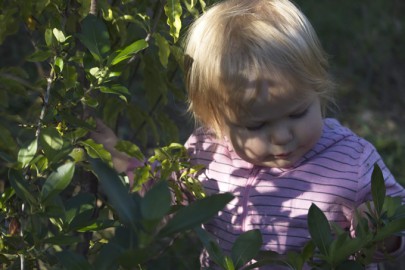
Connecting with nature close to home
There was concern about housing and the need to reduce poverty. Great compassion was expressed about people’s lack of access to nature if living in inner city apartments or in reverse -those people who are too afflicted by nature; living in cold and damp houses. There was also much appreciation for the environmental education resources that were available during lockdown and people would like to see more of these. People also hope that the rāhui experience will help us raise kids with less focus on money and more on re-connecting with the land for well-being.
“Overnight, it felt like, the economy was revealed as an apparatus for creating and maintaining well-being... So, if we can understand that so completely and so quickly, that same ability can be used to understand other crises like climate change and nature deficit and rapid large-scale loss of biodiversity. These things can be understood in completely different ways. And we can connect to them with a real sense of urgency but also a sense of unity and common purpose”
(West Aucklander).
Key contact
